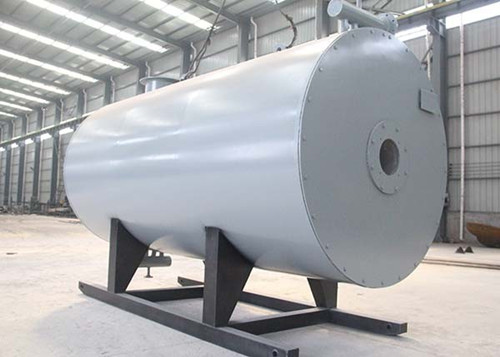Guide: Gas-fired heat-conducting oil furnace product features Gas-fired heat-conducting oil furnace is a heat-conducting oil furnace that burns natural gas, biogas, coal gas, liquefied petroleum gas and other gas fuels. It is also called gas-fired organic heat carrier furnace and heat-conducting oil boiler. It uses gas fuel. A new type of thermal energy equipment that uses heat transfer oil as a circulating medium for heating has the characteristics of low pressure and high temperature. The capacity is usually expressed in MW, that is, megawatts.
Gas thermal oil heater Features
Gas heat conduction oil furnace is a heat conduction oil furnace that burns natural gas, biogas, coal gas, liquefied petroleum gas and other gas fuels. It is also called gas organic heat carrier furnace and heat conduction oil boiler. It uses gas fuel and heat conduction oil as the circulating medium. The new type of thermal energy equipment for heating has the characteristics of low pressure and high temperature, and the capacity is usually expressed by "MW", that is, megawatts.
Gas heat conduction oil furnace application range:
Gas-fired heat-conducting oil furnace has a wide range of applications, mostly used in chemicals, grease, synthetic fiber, paper, plastic, rubber, wood, metallurgy, building materials, and food. Industries such as textiles and printing are mostly related to production needs.
The main fuel of gas-fired heat-conducting oil furnace is natural gas, which is one of the main fuels in the current boiler products. It has the characteristics of environmental protection, cleanliness and low pollution. It is also one of the most used fuels for boilers and occupies a dominant position.

1. Low pressure and high temperature
Compared with steam boilers, gas-fired heat-conducting oil furnaces can operate at lower pressures, and can obtain higher operating temperatures. It has the characteristics of low temperature and high pressure, which can achieve stability under various loads and keep thermal efficiency at the best Work level status.
2, clean and environmentally friendly
Gas-fired heat-conducting oil furnace can make fuel combustion more fully without wasting too much fuel. Compared with traditional hand-fired boilers, it saves 35% and 25% compared with chain boilers. It also saves operating costs with smokeless and energy-saving technology.
3, less supporting equipment
Gas-fired heat-conducting oil furnace has fewer auxiliary equipment, does not take up too much space during transportation and installation, can save floor space, and is easier to install and debug, and it can be counted into working status after simple installation.
4, stable heating
The gas heat conduction oil furnace is stable in heating, and the heating temperature can be adjusted accurately. The heat-carrying medium and heat-conducting oil furnace in the heat-conducting oil furnace and pipeline are relatively stable and will not produce large fluctuations in steam temperature.
5. Cost reduction
The cost of the gas heat conduction oil furnace is relatively low, and it has the characteristics of small investment and easy manufacturing. This is because the heat conduction oil furnace operates at a lower pressure and is easier to manufacture than hot water boilers and steam boilers.
6, high thermal efficiency
The gas-fired heat-conducting oil furnace adopts a three-circuit coil design and a direct-flow structure, which not only makes the heating area more sufficient, but also has a higher safety factor, which further improves the thermal efficiency.




























